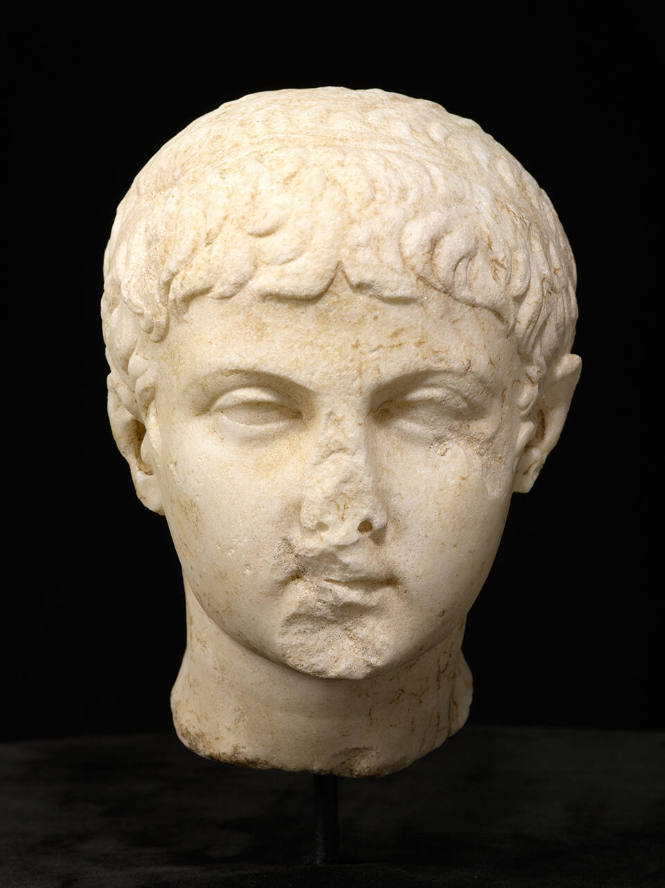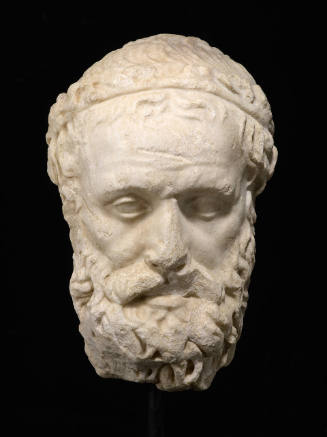Portrait Head of a Boy with Fillet
Artist
Unknown
DateLate 1st century BCE–1st century CE
MediumMarble
Dimensionsheight, width, and depth: 7 1/2 × 5 3/4 × 5 1/2 in. (19.1 × 14.6 × 14 cm)
ClassificationsSculpture
Credit LineGift of Dr. and Mrs. George W. Paschal
Object numberG.72.21.1
On View
On view[1] Per Brun, see letter to Moussa Domit dated December 27, 1972 (see file).
[2] Per Brun, see letter to Moussa Domit dated December 6. 1972.
[3] Per Brun, see undated letter to Mary Ellen Soles in response to Soles' letter dated February 28, 2001, where Brun indicates a Dutch collection, not a Swiss one for this small marble head.Published ReferencesArt Society News 1, no. 2 (Summer 1973), illus.
Gazette des Beaux-Arts no. 339 (February 1974), illus. 102.
Zsolt Kiss, L'Iconographie des Princes Julio-Claudiens au Temps d'Auguste et de Tiber. Warsaw (1975), 64, illus. fig. 125.
"Acquisitions," North Carolina Museum of Art Bulletin 12, nos. 1 and 2 (December 1973), listed 51.
H. G. Frenz, “Zur Benennung des ‘Mainzer Kopfes.’” Archäologisches Korrespondenzblatt 12: 378 n. 27 (1982).
Pollini, The Portraiture of Gaius and Lucius Caesar (New York: Fordam University Press, 1987) 79-80, 86, 106 cat. no. 35, pl. 36.Exhibition HistoryRaleigh, NC, North Carolina Museum of Art, "Becoming the NCMA: 10 Decades of Collecting, 1924-2022," June 11-August 21, 2022.
Raleigh, NC, North Carolina Museum of Art, "The People's Collection, Reimagined," October 7, 2022–present. Object Rights Statement
The North Carolina Museum of Art (NCMA) makes images of its collection available online to support research and scholarship and to inform and educate the public. Certain works of art, as well as the photographs of those works of art, may be protected by copyright, trademark, or related interests not owned by the NCMA. The responsibility for ascertaining whether any such rights exist and for obtaining all other necessary permissions remains with the applicant. To request images and/or permissions from the NCMA, please complete our online request form.
Unknown
circa 20 BCE–20 CE



















